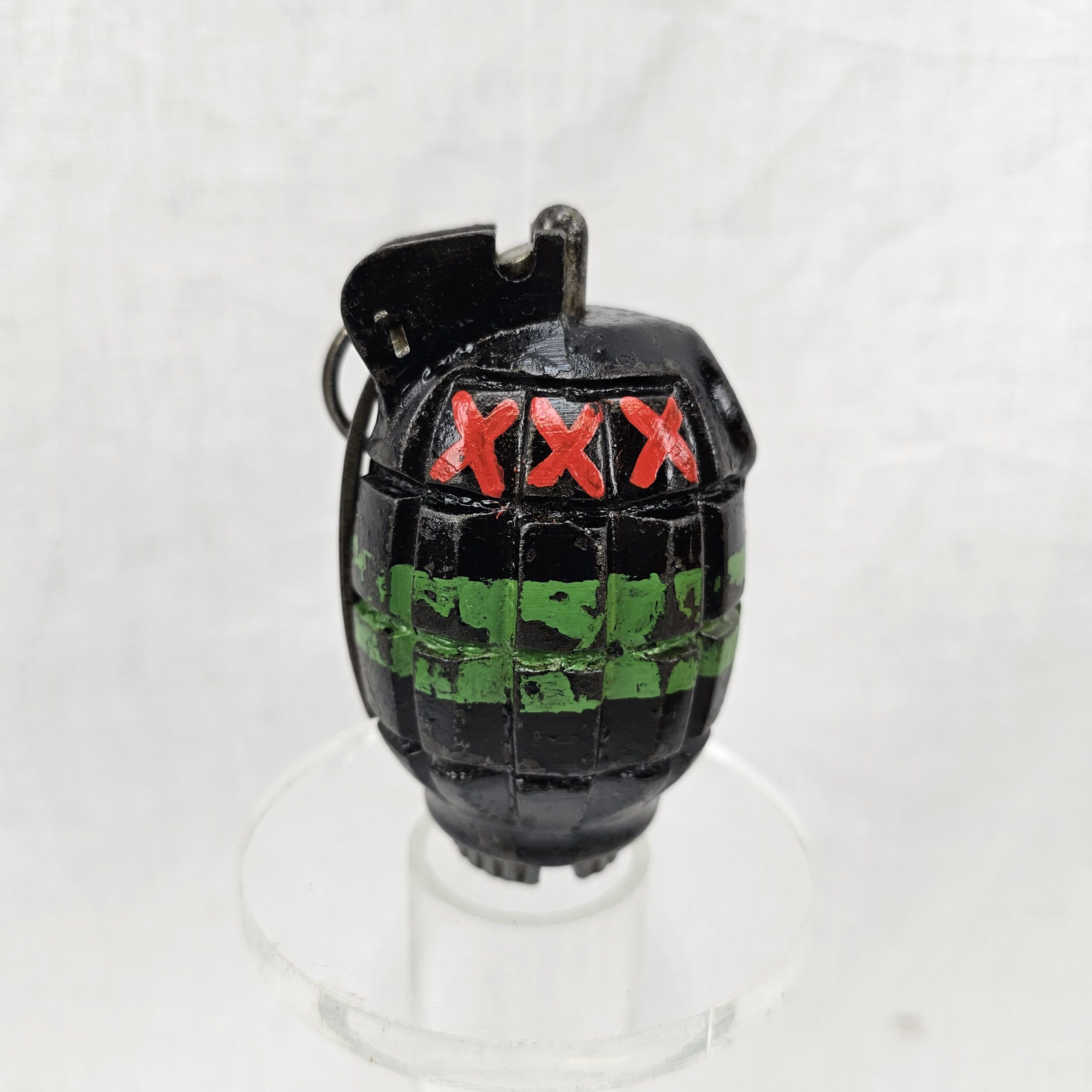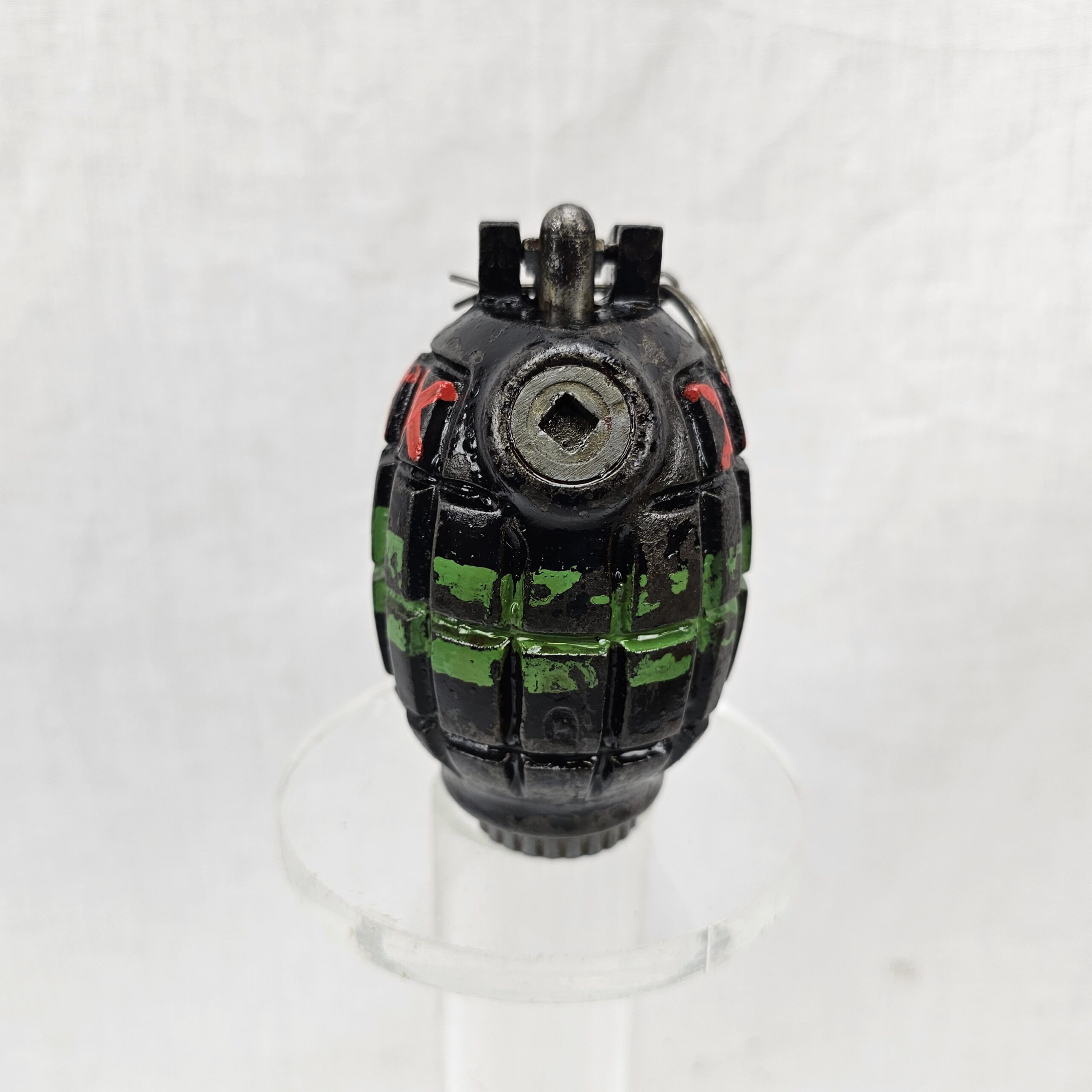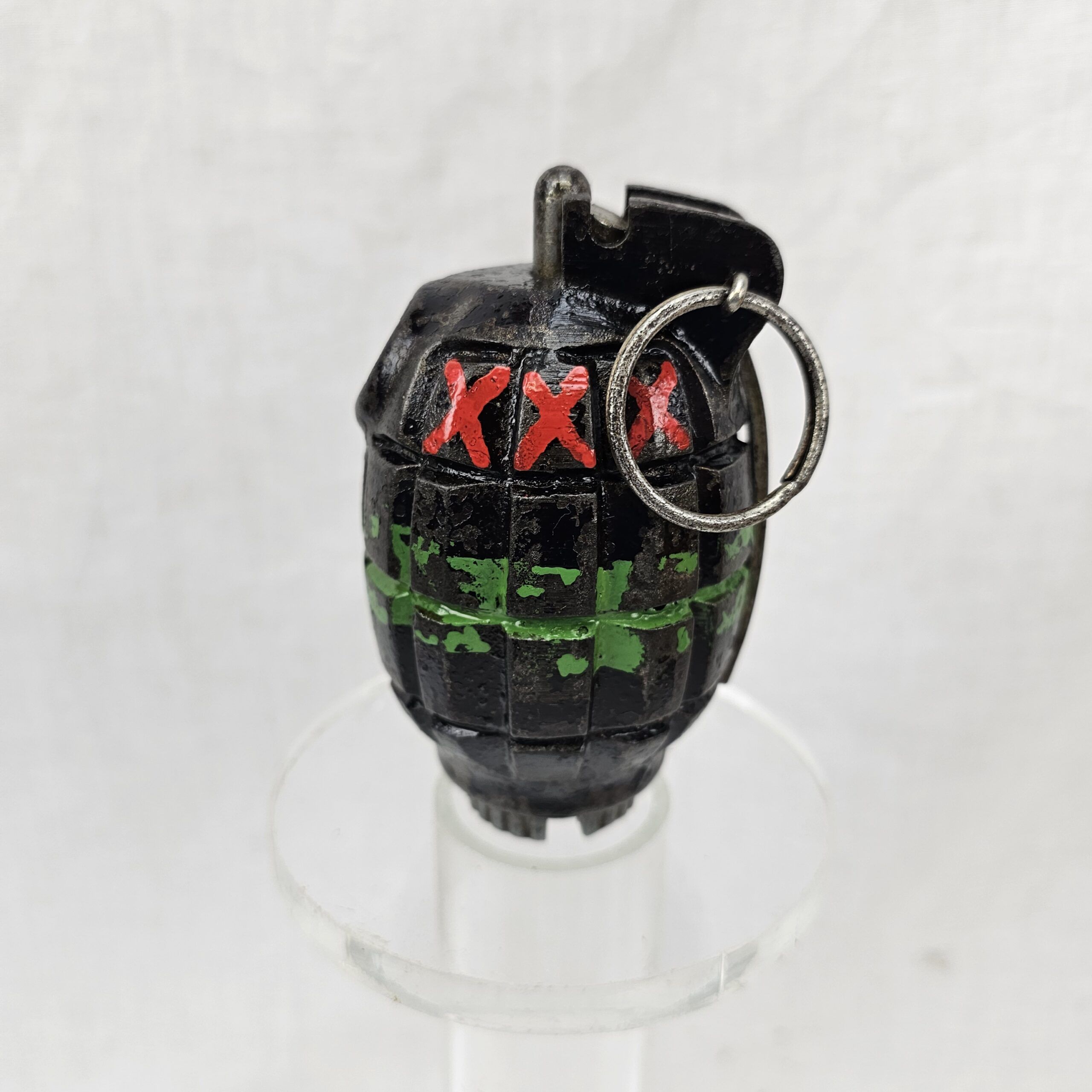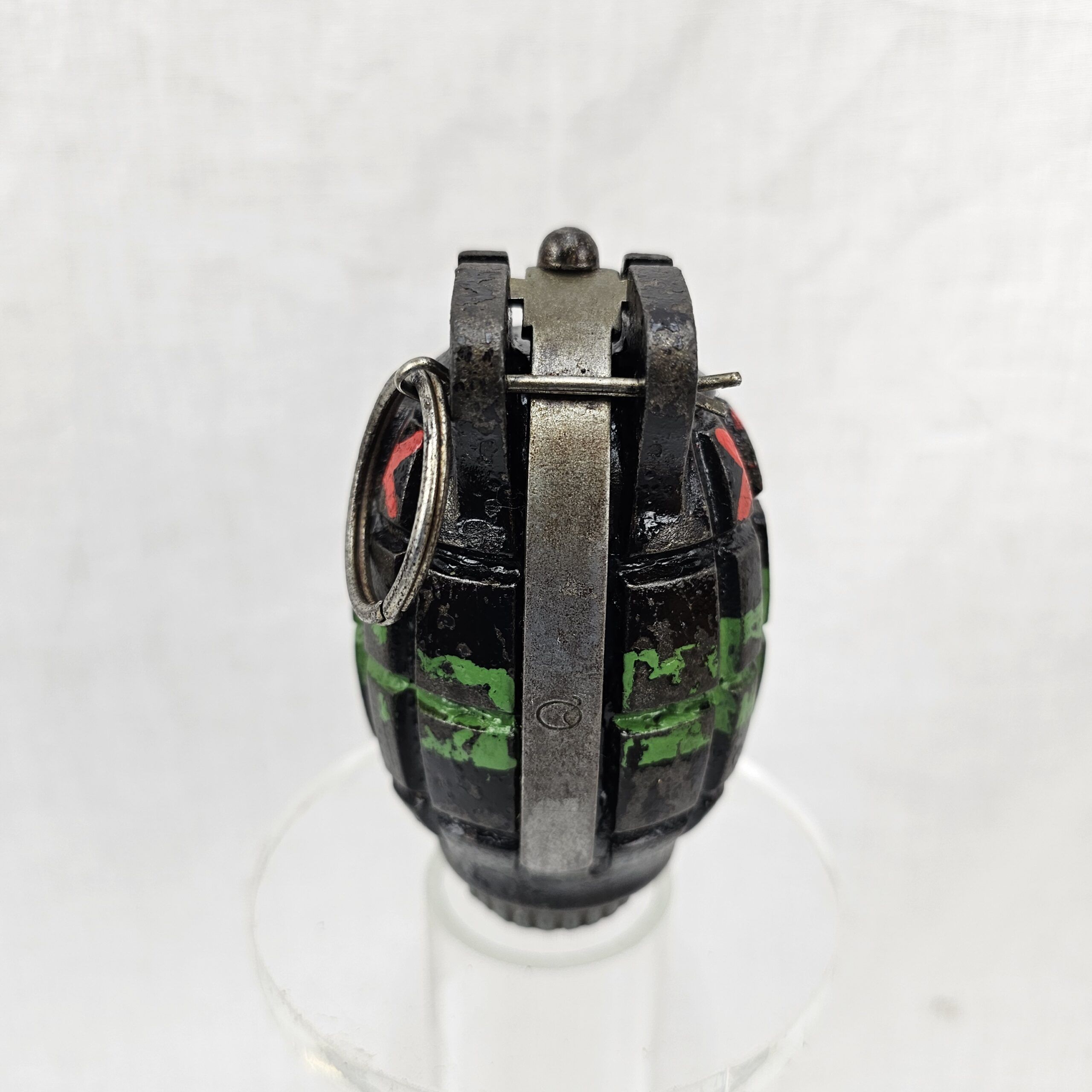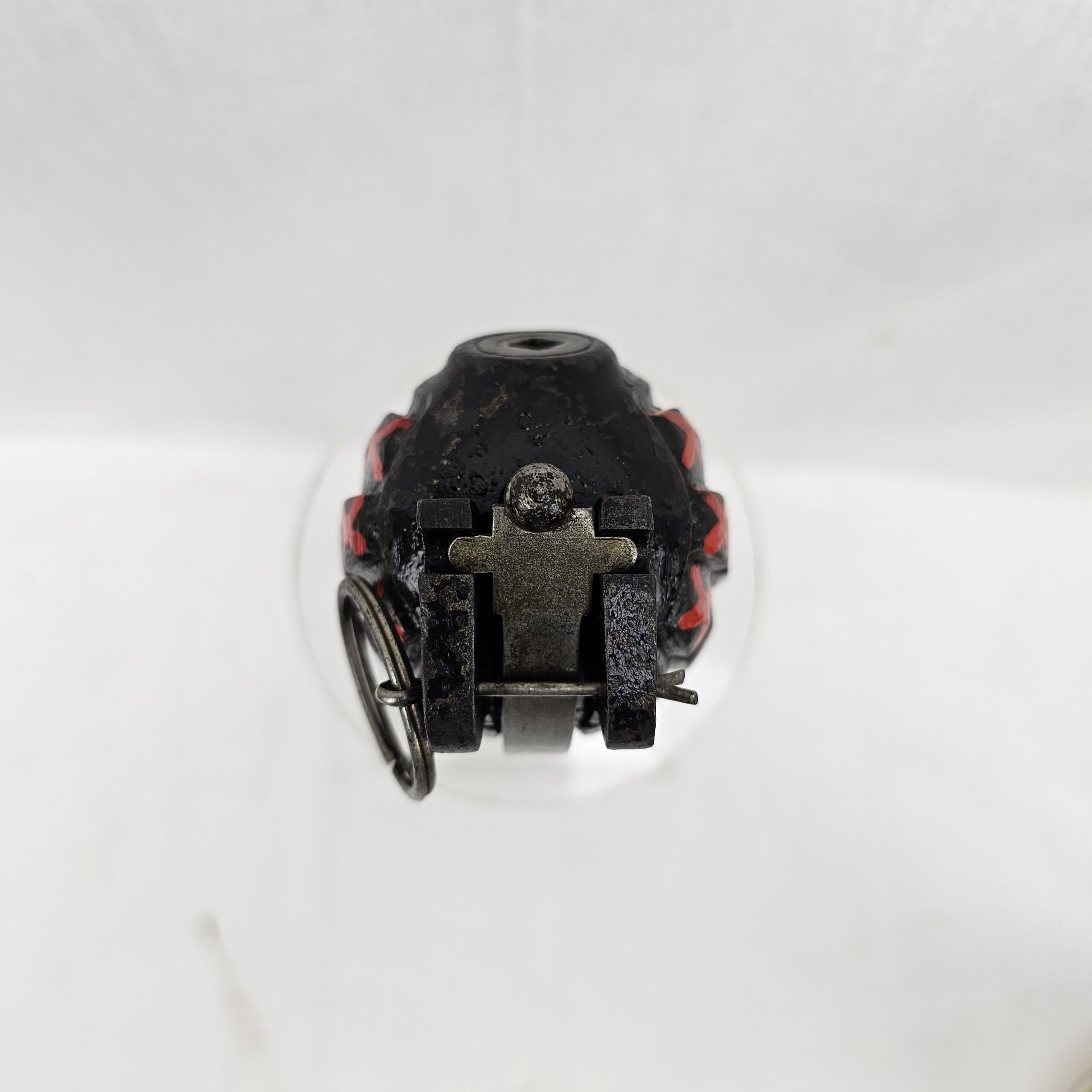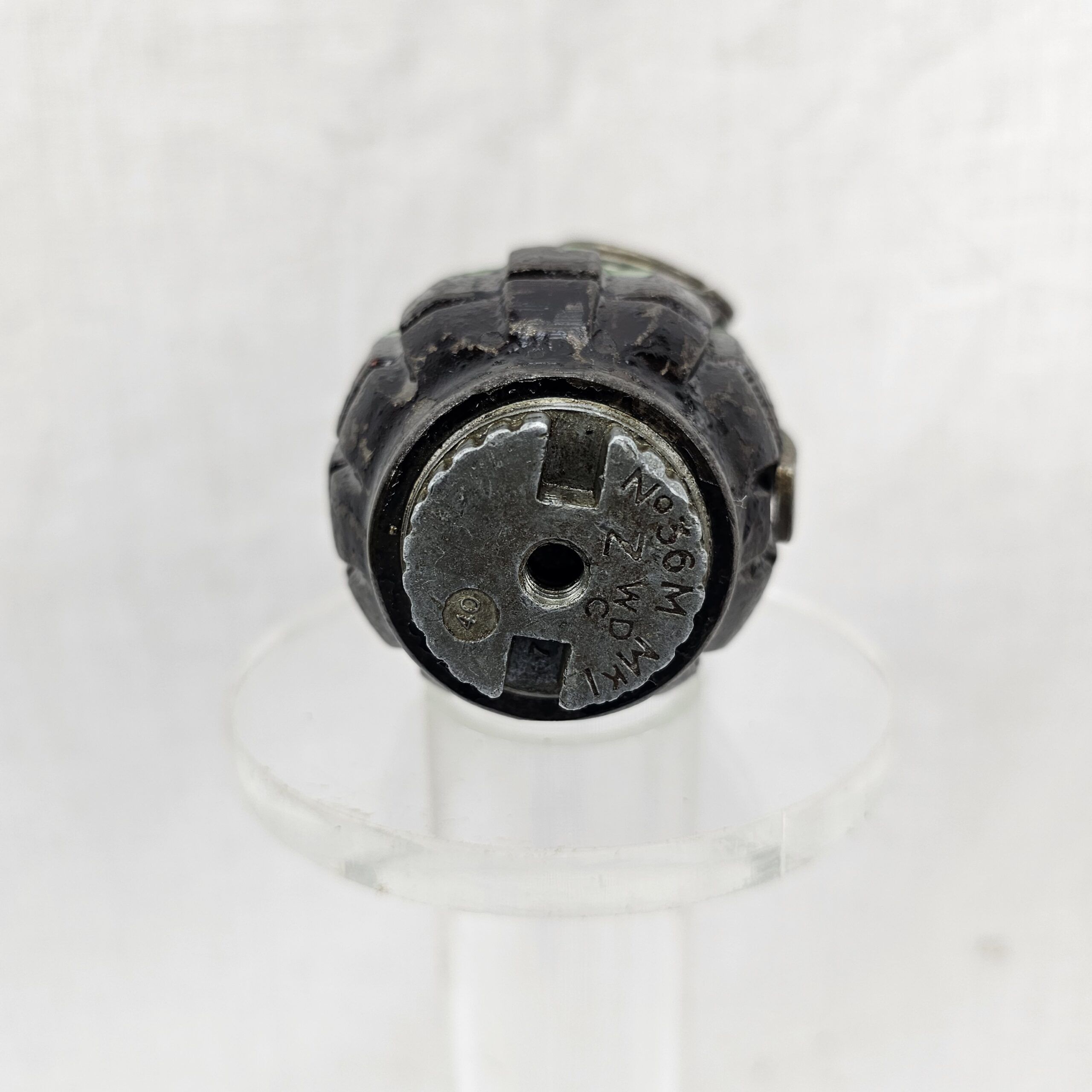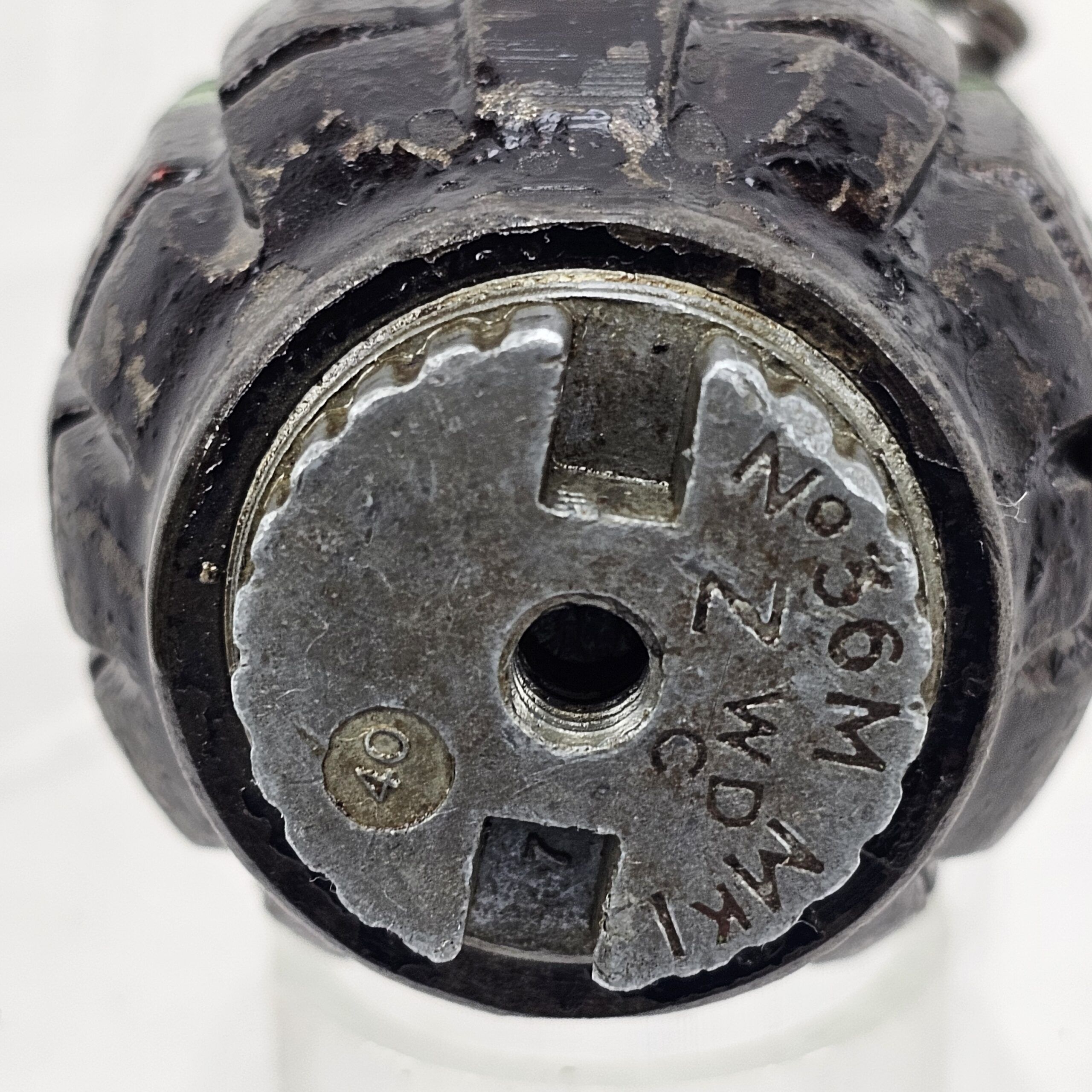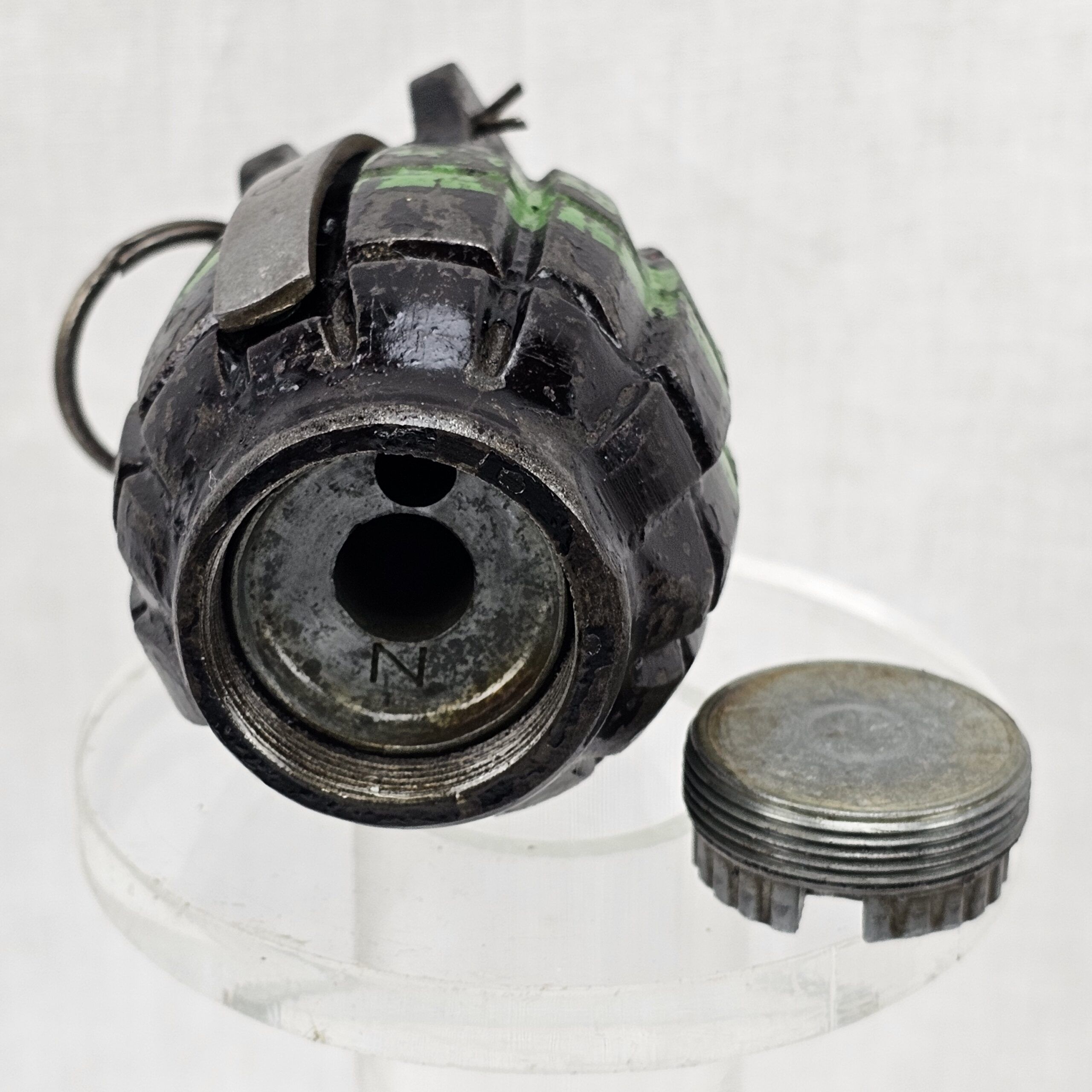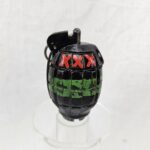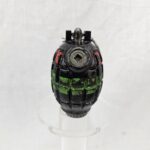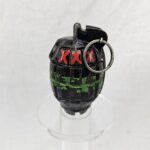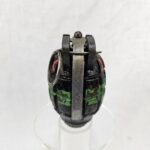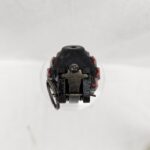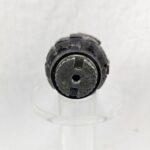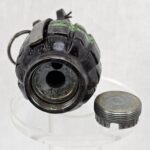~ WW2 1940 Inert British Mills Bomb No. 36 MK1 by Qualcast ~
The British Mills Bomb No. 36 MK1 is one of the most iconic hand grenades used during World War II. Its history, especially the inert training versions produced by companies like Qualcast, reflects the significant role of industry in supporting the war effort.
It has the square key cut filler plug hole, which was present on the early WW2 variants.
Description
Shape and Structure: The grenade has a distinctive grooved, pineapple-shaped cast iron body, typical of the Mills Bomb design. This shape was intended to enhance fragmentation upon detonation.
Color and Markings:
The grenade is painted black, which is often used to indicate that it is an inert (non-functional) training version rather than a live explosive.
There are three red “X” marks painted on the upper part of the grenade. These markings might be specific to the training version or indicate that it is a practice grenade.
A green band encircles the middle of the grenade, which was commonly used in live grenades to indicate the type of explosive or filler. In this case, the green band on an inert grenade might simply be for identification purposes during training.
Lever and Pin: The grenade has a metal lever and a pull ring pin mechanism. These parts are designed to mimic the functionality of a live grenade, allowing soldiers to practice the arming and throwing process safely.
Here’s a detailed look at the history and significance of the 1940 inert British Mills Bomb No. 36 MK1 made by Qualcast:
Design and Development
Inventor: The Mills Bomb was designed by William Mills, a hand grenade developer from Sunderland, England.
Introduction: The No. 36 MK1 variant was introduced in 1917, during World War I, as an improvement over earlier models, and it continued to be used during World War II due to its effectiveness and reliability.
Features
Construction: The grenade featured a grooved cast iron body, which created a fragmentation effect upon detonation. It was designed to be used in various conditions, including being waterproofed for use in tropical environments.
Mechanism: It operated using a percussion cap and time delay fuse, which allowed the thrower to take cover before detonation.
Inert Version: The inert versions, like those made by Qualcast, were used for training purposes. They were identical in shape, size, and weight to live grenades but contained no explosive material. This allowed soldiers to practice safely.
Qualcast’s Role
Company Background: Qualcast, originally known for manufacturing lawnmowers, was one of many civilian companies repurposed to produce military equipment during World War II. The need for extensive training meant that inert grenades were crucial for preparing troops without the risks of handling live ordnance.
Production: Qualcast manufactured the No. 36 MK1 grenades to strict specifications to ensure they accurately mimicked the live versions in every aspect except for the explosive charge.
Historical Context
World War II: The No. 36 MK1 Mills Bomb was extensively used by British and Commonwealth forces throughout World War II. It was prized for its reliability and effectiveness in trench and urban warfare.
Training Importance: The use of inert grenades was essential for training new recruits and ensuring they could handle live grenades effectively and safely in combat situations.

